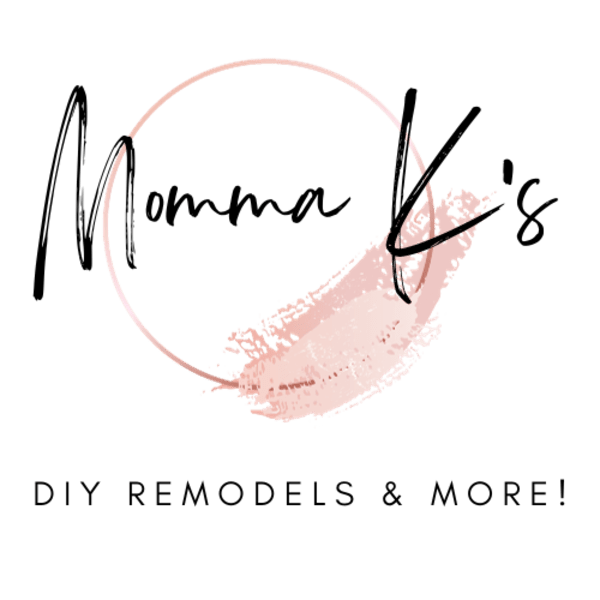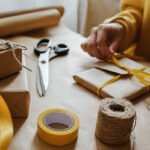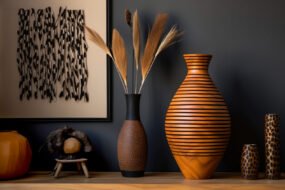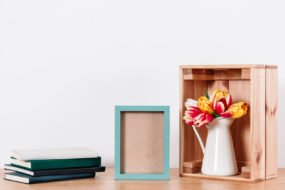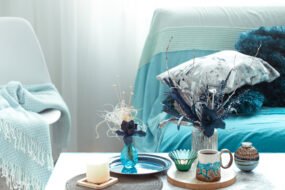
Transforming your home into a space that reflects your personality and style doesn’t have to be expensive or time-consuming. With a little creativity and some DIY know-how, you can breathe new life into your living spaces. Whether you’re looking to refresh a single room or give your entire home a makeover, these easy DIY home decor projects will help you create a stylish, welcoming environment without breaking the bank.
Introduction: The Power of DIY in Home Decor
The home is where we spend most of our time, so it’s essential that our living spaces feel comfortable, functional, and aesthetically pleasing. However, home decor projects can often seem overwhelming, especially when you consider the potential costs and time involved. That’s where DIY projects come in. By taking on home decor projects yourself, you can save money, customize your space to your exact preferences, and enjoy the satisfaction of creating something with your own hands.
DIY home decor is all about creativity and personalization. Whether you’re a seasoned DIY enthusiast or just starting out, there are countless projects you can tackle that will make a big impact on your home. In this blog, we’ll explore a variety of easy DIY home decor projects that are perfect for transforming your space, no matter your skill level.
1. Wall Art: Bringing Personality to Your Walls
Walls are like a blank canvas waiting to be transformed. Adding art to your walls is one of the easiest ways to inject personality and style into a room. Here are some DIY wall art ideas that will help you create stunning focal points in your home.
1.1 Gallery Wall
A gallery wall is a versatile and creative way to display a collection of your favorite photos, prints, and artwork. The beauty of a gallery wall is that it can be customized to fit any space and style.
How to Create a Gallery Wall:
- Choose Your Wall: Select a wall in your home that could use some visual interest, such as the space above a sofa, bed, or entryway.
- Gather Your Art: Collect a variety of frames in different sizes and styles. You can use family photos, art prints, illustrations, or even DIY artwork.
- Layout Planning: Lay out your frames on the floor to experiment with different arrangements. Start with a central piece and work your way outwards, balancing the sizes and shapes of the frames.
- Hang Your Art: Once you’re satisfied with the arrangement, start hanging your frames on the wall. Use a level to ensure everything is straight.
1.2 DIY Abstract Canvas Art
Abstract art is a great way to add color and texture to your walls. The best part? You don’t need to be a professional artist to create your own abstract canvas art.
How to Create Abstract Canvas Art:
- Materials: Canvas, acrylic paints, brushes, and painter’s tape.
- Design: Start by applying painter’s tape to create geometric shapes on the canvas. Then, use your brushes to fill in the shapes with different colors. Don’t worry about making it perfect—abstract art is all about expressing creativity.
- Remove Tape: Once the paint is dry, carefully remove the painter’s tape to reveal clean lines and bold shapes.
- Display: Hang your finished artwork on the wall to add a modern, artistic touch to your space.
1.3 DIY Floating Shelves
Floating shelves are both functional and decorative. They provide a place to display small art pieces, plants, books, and other decor items, helping to keep your space organized while adding visual interest.
How to Install Floating Shelves:
- Materials: Wood boards, brackets, screws, drill, level, and paint or stain (optional).
- Preparation: Cut the wood boards to your desired length. Sand the edges for a smooth finish, and if you like, paint or stain the wood to match your decor.
- Installation: Use a level to ensure the shelves are straight, then attach the brackets to the wall. Secure the wood boards onto the brackets using screws.
- Decorate: Arrange your favorite items on the shelves, such as framed photos, small plants, or decorative objects.
2. Furniture Makeovers: Breathing New Life into Old Pieces
One of the most impactful ways to transform your space is by updating your furniture. Instead of buying new pieces, consider giving your existing furniture a makeover. With a few simple DIY techniques, you can turn tired, outdated furniture into something fresh and stylish.
2.1 Painted Furniture
Painting furniture is a cost-effective way to refresh old pieces and give them a new look. Whether you want to brighten up a dull dresser, add color to a dining table, or modernize a vintage chair, a coat of paint can work wonders.
How to Paint Furniture:
- Materials: Sandpaper, primer, paint, brushes or rollers, and sealant.
- Preparation: Start by sanding the furniture to remove any old finish or rough spots. Wipe away the dust and apply a coat of primer to help the paint adhere better.
- Painting: Once the primer is dry, apply your chosen paint color in thin, even coats. You may need to apply multiple coats to achieve full coverage.
- Finishing Touches: After the paint is dry, seal the furniture with a clear topcoat to protect the finish.
2.2 Upholstery Update
Updating the upholstery on chairs, stools, or benches is an easy way to give your furniture a fresh look. With some fabric and basic tools, you can reupholster your furniture to match your current decor style.
How to Reupholster a Chair Seat:
- Materials: Fabric, staple gun, scissors, and screwdriver.
- Remove the Old Fabric: Start by removing the seat from the chair frame. Use a screwdriver to take off the old fabric and padding.
- Cut New Fabric: Lay the new fabric face down, and place the seat on top. Cut the fabric, leaving enough excess to wrap around the edges of the seat.
- Staple the Fabric: Pull the fabric tightly over the seat and staple it to the underside. Start with the corners and work your way around, ensuring the fabric is smooth and taut.
- Reattach the Seat: Once the fabric is securely stapled, reattach the seat to the chair frame.
2.3 Decoupage Furniture
Decoupage is a decorative technique where you apply paper cutouts to furniture using a special glue. It’s a fun and creative way to add unique patterns and designs to your furniture.
How to Decoupage Furniture:
- Materials: Decorative paper or fabric, decoupage glue, brush, and scissors.
- Preparation: Start by cutting your decorative paper or fabric into the desired shapes or patterns.
- Apply Glue: Brush a layer of decoupage glue onto the surface of the furniture. Place the paper or fabric onto the glue, smoothing out any wrinkles or bubbles.
- Seal: Once the paper or fabric is in place, apply another layer of glue over the top to seal it. Allow it to dry completely before using the furniture.
3. Lighting: Brightening Up Your Space
Lighting plays a crucial role in setting the mood and ambiance of a room. With a few DIY lighting projects, you can create custom lighting solutions that enhance your decor and make your space feel warm and inviting.
3.1 DIY Pendant Lights
Pendant lights are a stylish and versatile lighting option that can be customized to fit any decor style. Whether you want to add a statement piece to your dining area or brighten up a kitchen island, DIY pendant lights are a great project to tackle.
How to Make a DIY Pendant Light:
- Materials: Pendant light kit, lampshade or basket, drill, and light bulb.
- Preparation: Choose a lampshade or basket that you want to use as the light fixture. Drill a hole in the center of the shade if it doesn’t already have one.
- Assemble the Light: Thread the pendant light kit through the hole in the shade and secure it in place. Follow the kit’s instructions to connect the wiring.
- Install: Hang the pendant light from the ceiling, following safety guidelines and local electrical codes. Insert the light bulb and enjoy your new custom lighting.
3.2 String Light Decor
String lights aren’t just for the holidays—they can be used year-round to add a soft, warm glow to your home. There are countless ways to incorporate string lights into your decor, from draping them over a headboard to wrapping them around a banister.
How to Use String Lights in Home Decor:
- Headboard Accent: Drape string lights along the top of your headboard or create a canopy of lights over your bed for a cozy, romantic vibe.
- Wall Art: Arrange string lights on a wall in the shape of a heart, star, or any other design you like. Secure the lights in place with small nails or hooks.
- Mason Jar Lanterns: Place battery-operated string lights inside mason jars to create charming lanterns that can be used as table centerpieces or placed on shelves.
3.3 DIY Table Lamps
Creating your own table lamp is easier than you might think, and it’s a great way to add a personal touch to your decor. With a few basic supplies, you can craft a unique lamp that complements your style.
How to Make a DIY Table Lamp:
- Materials: Lamp kit, base (such as a vase, bottle, or ceramic object), drill, and lampshade.
- Preparation: Choose a base for your lamp, making sure it’s sturdy and has a flat surface for the lampshade. Drill a hole in the center of the base for the lamp rod.
- Assemble the Lamp: Thread the lamp rod through the hole in the base and secure it in place. Attach the wiring and socket according to the lamp kit instructions.
- Finish: Attach the lampshade to the top of the lamp and add a light bulb. Your custom table lamp is ready to illuminate your space.
4. Textiles: Adding Comfort and Style
Textiles such as pillows, curtains, and rugs are essential elements in home decor that add comfort, warmth, and color to a room. With a few DIY projects, you can create custom textiles that perfectly match your style and enhance the overall look of your space.
4.1 DIY Throw Pillows
Throw pillows are a quick and easy way to change the look of a room. By making your own throw pillows, you can choose fabrics and patterns that complement your decor and add a personal touch.
How to Make DIY Throw Pillows:
- Materials: Fabric, pillow inserts, scissors, sewing machine, and zipper (optional).
- Cut Fabric: Cut two pieces of fabric to the size of your pillow insert, leaving an extra half-inch on each side for seam allowance.
- Sew the Pillow: Place the fabric pieces right sides together and sew around the edges, leaving a small opening for the pillow insert. If you’re adding a zipper, sew it into one of the edges before stitching the other sides.
- Insert Pillow: Turn the fabric right side out and insert the pillow. Hand-sew the opening closed, or zip it up if you added a zipper.
4.2 DIY Curtains
Curtains can be a major focal point in a room, and making your own allows you to choose the perfect fabric and length for your space. Whether you want simple, sheer curtains or heavy, patterned drapes, DIY curtains are a rewarding project.
How to Make DIY Curtains:
- Materials: Fabric, curtain rod, sewing machine, and iron.
- Measure and Cut Fabric: Measure the height and width of your window to determine how much fabric you’ll need. Add extra length for hemming and gathering at the top.
- Sew Curtains: Hem the edges of the fabric to prevent fraying. If you want a rod pocket, fold the top edge over and sew it in place, leaving a space for the curtain rod.
- Hang Curtains: Slide the curtains onto the rod and hang them in your window. Adjust the gathers to create the desired look.
4.3 DIY Area Rugs
Area rugs anchor a room and add warmth underfoot, but they can be expensive to buy. Making your own area rug is a cost-effective way to get a custom design that fits your space perfectly.
How to Make a DIY Area Rug:
- Materials: Rug pad, fabric or carpet remnant, scissors, and adhesive spray.
- Cut Rug Pad: Cut the rug pad to the desired size of your rug.
- Attach Fabric: Lay the fabric or carpet remnant on top of the rug pad and smooth it out. Use adhesive spray to attach the fabric to the pad, ensuring there are no wrinkles or bubbles.
- Finish Edges: Trim any excess fabric around the edges and secure the edges with additional adhesive or fabric glue.
Conclusion: Transforming Your Space with DIY Projects
Transforming your home into a space that feels uniquely yours doesn’t have to be a daunting task. With these easy DIY home decor projects, you can tackle each area of your home, one project at a time, and create a space that reflects your personal style and creativity.
DIY projects not only allow you to save money, but they also offer a sense of accomplishment and satisfaction that comes from making something with your own hands. Whether you’re updating your walls with custom art, giving your furniture a fresh look, or adding new lighting and textiles, the possibilities are endless.
So, roll up your sleeves, gather your supplies, and start transforming your space today. Your home is a reflection of who you are, and with a little effort and imagination, you can create a living environment that you love coming home to every day.
